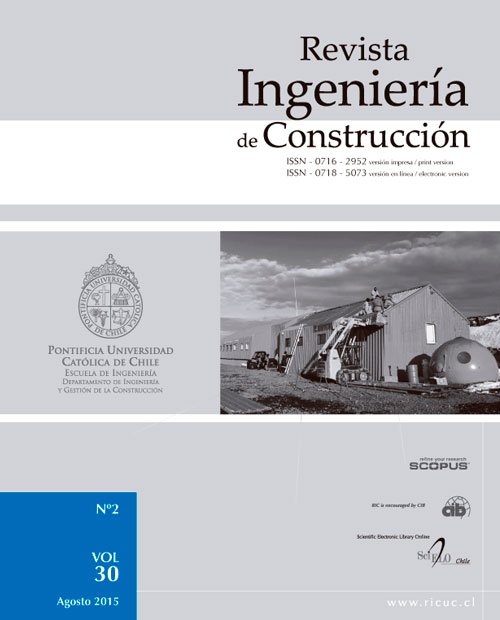Concrete with recycled aggregates as urban sustainability project
DOI:
https://doi.org/10.4067/S0718-50732015000200002Keywords:
sustainable construction, inverse mining, recycled concrete, urban ecosystem, integrated project managementAbstract
This article addresses the preparation of a concrete using recycled aggregates obtained from the rubble recovery of concrete and masonry works. The study showssome aspects such as: compressive strength at 3, 7, 14, 28, 56 and 91 days; porosity, ultrasonic pulse speed and carbonation; economic costs compared to aconventional concrete; and a review of the public policies on sustainable construction and the use of rubble, in the city of Medellin, Colombia. For some mixes, thecompressive strength and the ultrasonic pulse speed measurements were approximately the 98% of that of the reference mix. Likewise, the mix prepared with 100%of recycled aggregates showed a difference in the carbonation deepness of only 0.7 mm compared with the mix of reference for a simulated age of 27 years. Theresults obtained with the replacement of natural coarse and fine aggregates in 25%, 50%, and 100%, and the advance in the political-administrative guidelines of thecity in the last eleven years, allow deducing the possibility of preparing structural and non-structural concretes for massive use in the construction area.


